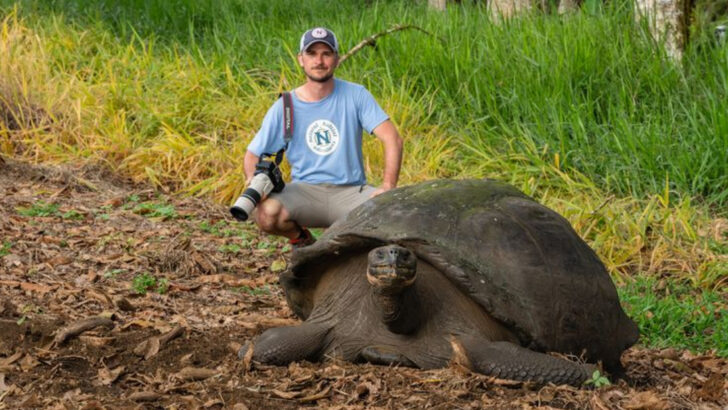Some animals move so slowly, you could nap between their steps.
Others? Blink, and they’ve vanished into the distance like four-legged rockets.
On land, speed—or the complete lack of it—can mean everything. For some creatures, being slow is a survival tactic. For others, it’s a race for their next meal, or their lives. Whether they shuffle, bolt, creep, or charge, these animals each have their own reason for how fast (or slow) they go.
We’ve rounded up the 8 slowest land animals who treat every journey like a lazy stroll through molasses—and 8 land-based speed demons that could leave your bicycle (and your pride) in the dust.
Ready to meet the sloths, snails, and cheetahs of the world? Lace up—or don’t. Some of them aren’t going anywhere fast.
Three-toed Sloth
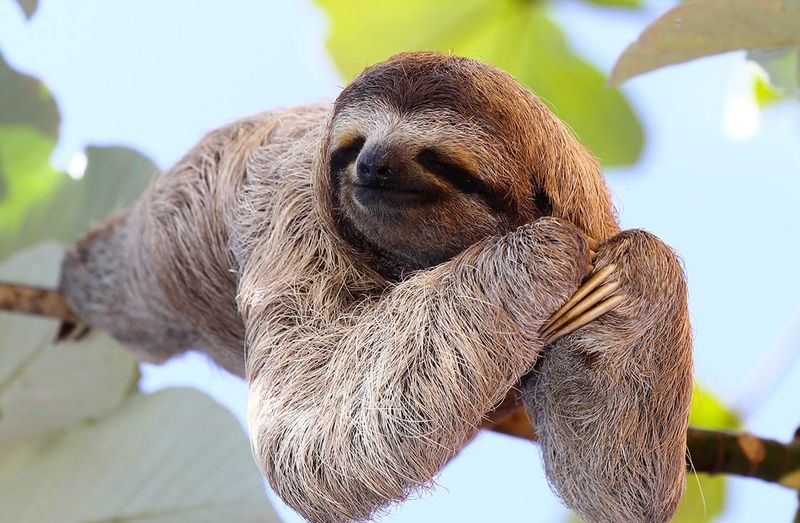
The three-toed sloth is a symbol of relaxation, moving at an average speed of just 0.15 miles per hour. It spends most of its life hanging upside down in the trees of Central and South American rainforests, eating leaves and sleeping for up to 20 hours a day. Its slow lifestyle helps conserve energy, as its diet isn’t particularly nutritious. Despite its sluggish pace, the sloth’s leisurely movements are a perfect adaptation to its environment, providing camouflage from predators. This laid-back creature is a true testament to the adage that slow and steady wins the race.
Garden Snail

The garden snail, with its distinctive coiled shell, epitomizes slowness. Traveling at a speed of around 0.03 miles per hour, it takes life one slow step at a time. Snails secrete a slimy mucus to help them glide, leaving a silvery trail behind. Their slow pace allows them to consume and digest their herbivorous diet efficiently. Their leisurely pace isn’t just about movement; it’s a lifestyle. Even with this speed, garden snails are crucial to the ecosystem, helping decompose plant material. Their patient, persistent nature reminds us to enjoy the slow lane from time to time.
Giant Tortoise

Giant tortoises are iconic for their unhurried approach to life, moving at about 0.17 miles per hour. Found in places like the Galápagos Islands, these ancient reptiles can live over 100 years, largely due to their slow metabolisms. Their hefty shells and thick legs complement their sedentary lifestyle, allowing them to conserve energy. Eating mainly grasses and fruits, they can store large amounts of water and food to survive long periods without fresh resources. Their pace is a testament to endurance, embodying the idea that patience and resilience are key to longevity.
Koala
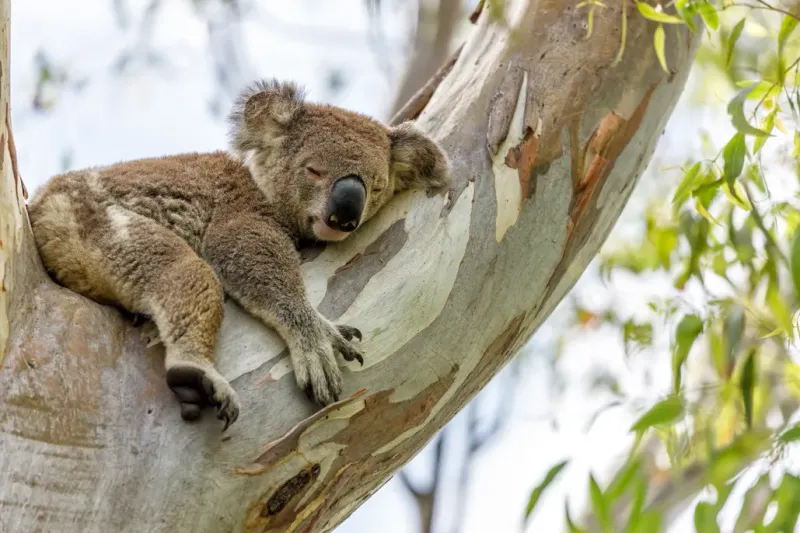
Koalas are known for their leisurely pace and sleeping habits. These marsupials spend most of their time dozing in eucalyptus trees, resting for up to 18 hours a day. When they do move, it’s with a deliberate slowness, climbing at a maximum speed of 0.12 miles per hour. Their diet consists mostly of eucalyptus leaves, low in nutrients, requiring a lot of rest to digest. This sleepy lifestyle helps conserve energy. Despite their placid nature, koalas are emblematic of the Australian wilderness, bringing a serene charm to the hustle of nature.
Manatee

Often referred to as sea cows, manatees are gentle giants of the water. Though primarily aquatic, they are known to venture onto land occasionally. Moving at about 3 to 5 miles per hour in water, their land movement is even slower. They graze on underwater vegetation, embodying a serene and gentle nature. Despite their size, manatees are harmless herbivores, contributing to the health of aquatic ecosystems. Their calm demeanor and slow pace remind us of the tranquility found in nature’s gentle rhythms, symbolizing peace and grace in the natural world.
Sluggish Seahorse
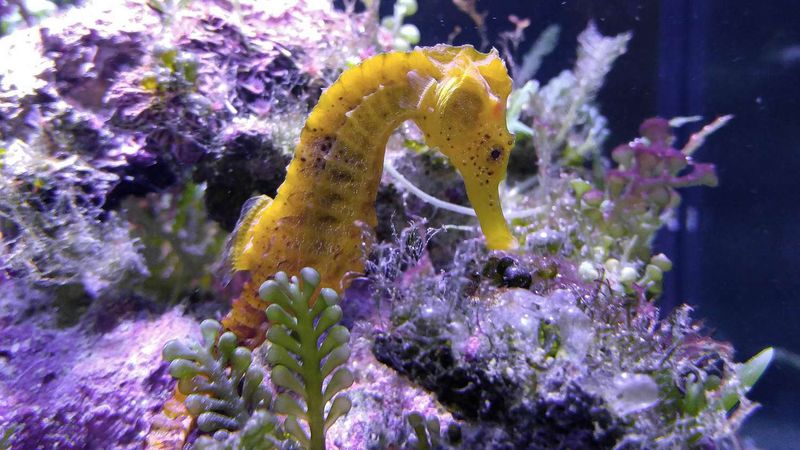
Seahorses are unique in their approach to movement. Unlike typical fish, they use small fins to propel themselves at a slow pace of about 0.01 miles per hour. Their bodies are covered in bony plates, providing protection as they drift along coral reefs. These creatures are masters of camouflage, blending seamlessly with their surroundings. The male seahorse’s role in pregnancy adds intrigue, making them fascinating subjects in marine biology. Their sluggish pace ensures they conserve energy, perfectly adapted to their delicate, underwater environment, representing the beauty of patience in nature’s design.
Banana Slug
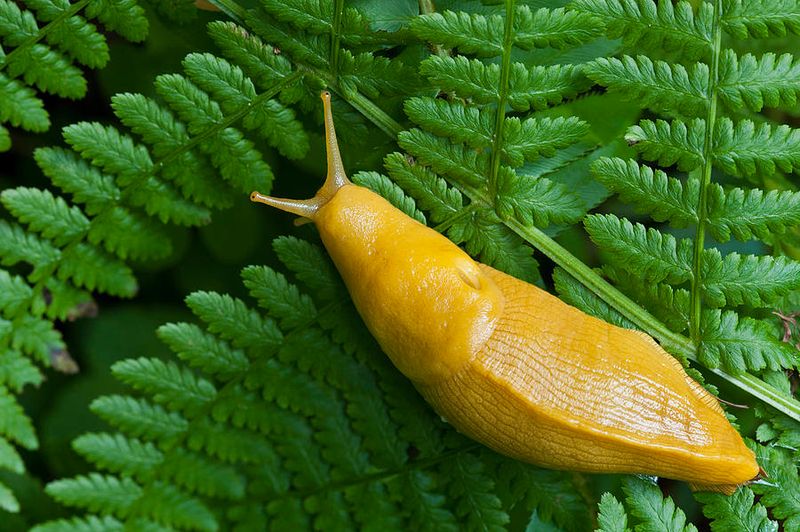
The banana slug, with its striking yellow hue, is a slow-moving mollusk found in North America’s damp forests. Moving at just 0.006 miles per hour, it’s in no rush, taking time to consume decaying plant material. This slow pace is crucial for decomposing forest debris, playing a vital role in nutrient cycling. Its mucus secretion helps prevent dehydration and aids in smooth movement over rough surfaces. The banana slug’s leisurely journey through life exemplifies the importance of every creature in maintaining ecological balance, reminding us that every role, no matter how slow, is significant.
American Woodcock
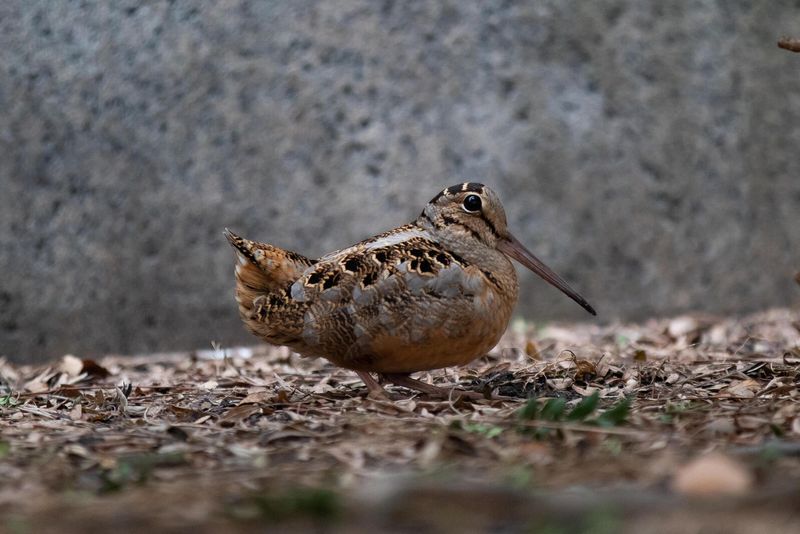
The American woodcock, known for its peculiar dance, is a ground-dwelling bird with a slow walk but quick flight capabilities. It moves at a leisurely pace while foraging for earthworms, its primary diet, using its long bill to probe the soil. Despite its slow ground speed, when threatened or during migration, it can reach swift speeds in the air. Its slow, deliberate walk and unique courtship dance add charm to its character. The woodcock’s blend of unhurried ground movement and swift flight embodies the duality of speed in nature’s fascinating design.
Cheetah
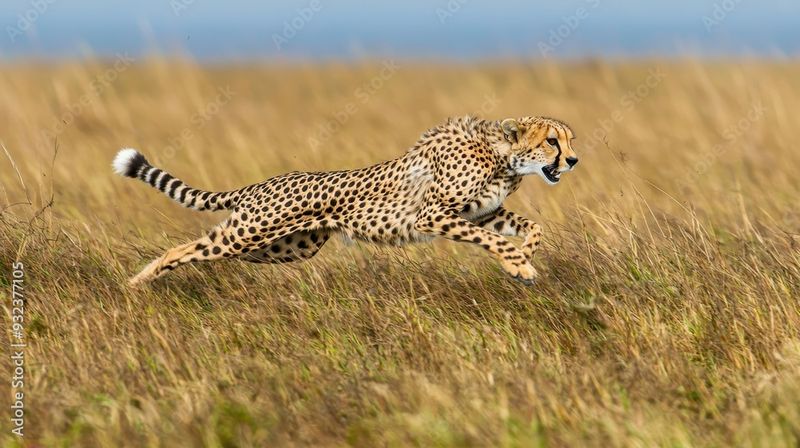
The cheetah, a marvel of evolution, holds the title for the fastest land animal, reaching speeds up to 60 miles per hour. Its lightweight frame, long legs, and specialized muscles allow for incredible acceleration. Built for short bursts of speed, cheetahs excel in chasing down prey in the African plains. Their distinctive black tear stripes aid in hunting by reducing glare from the sun. While they are swift hunters, cheetahs also face challenges due to habitat loss. Their remarkable speed and agility make them iconic symbols of nature’s power and precision in motion.
Peregrine Falcon
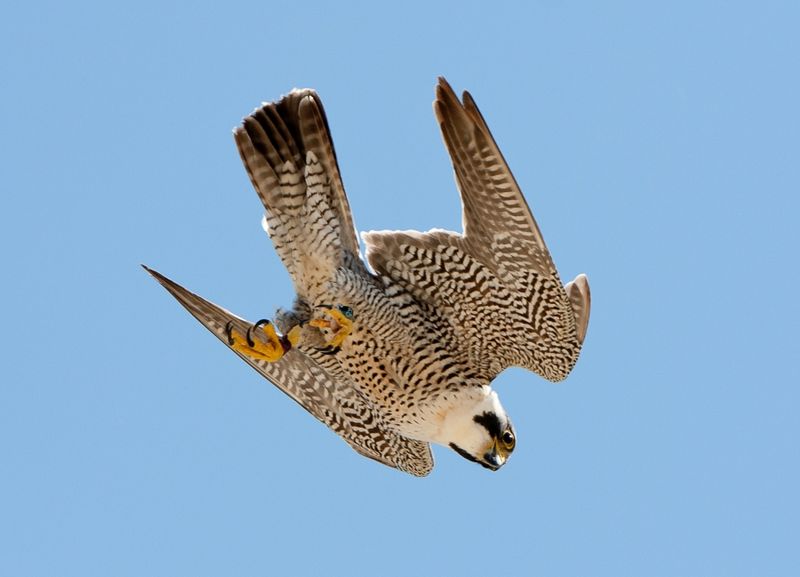
Known for its breathtaking diving speed, the peregrine falcon can reach up to 240 miles per hour. This bird of prey uses its incredible speed to catch birds mid-flight. Its streamlined body and powerful muscles enable such rapid dives. Found worldwide, peregrine falcons have adapted to diverse environments, from urban skyscrapers to remote cliffs. Their recovery from near extinction due to pesticides is a conservation success story. The falcon’s swift, fearless nature and unparalleled speed make it a master of the skies, showcasing the extremes of aerial prowess in the animal kingdom.
Pronghorn Antelope
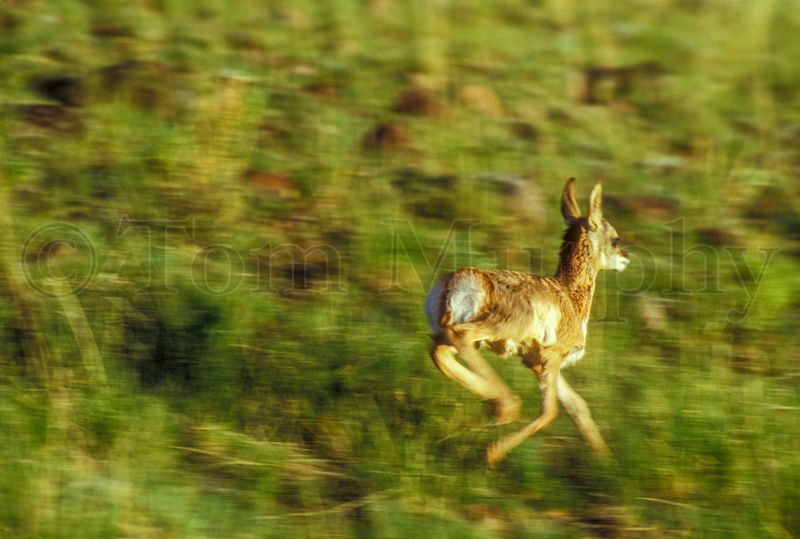
The pronghorn antelope, native to North America, is the second-fastest land animal, capable of sustaining speeds of up to 55 miles per hour. Unlike the cheetah, pronghorns can maintain their speed over longer distances, making them exceptional endurance runners. Their large lungs and strong heart enable efficient oxygen use, supporting prolonged sprints. Found in open plains and grasslands, they have evolved sharp vision to spot predators from afar. These graceful creatures symbolize the beauty of endurance and speed, reflecting the remarkable adaptations of mammals to wide-ranging habitats.
Quarter Horse

The American Quarter Horse is celebrated for its speed over short distances, rivaling some of the fastest animals on land. These horses can reach speeds up to 55 miles per hour, particularly in quarter-mile races for which they are named. Their stocky build and strong hindquarters contribute to their powerful acceleration. Renowned for their versatility, Quarter Horses are popular in rodeo events, ranch work, and competitive racing. They embody the spirit of the American West, showcasing a blend of power, speed, and agility. Their swift bursts make them formidable competitors on any track.
Ostrich
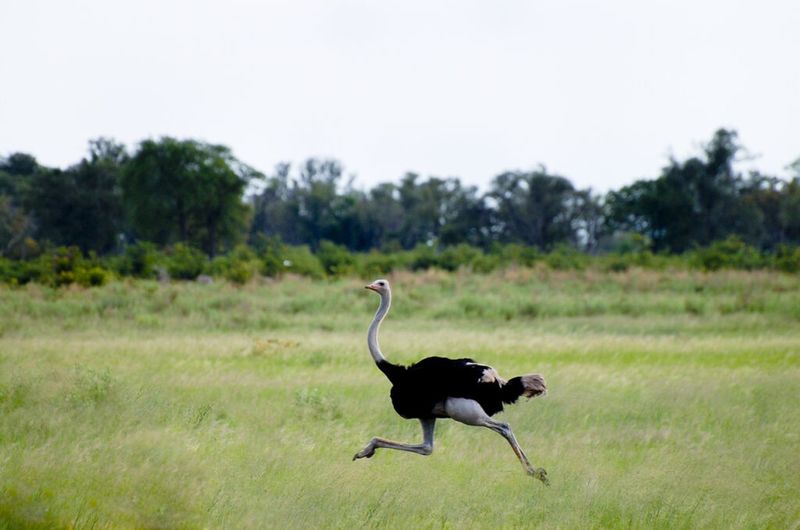
The ostrich is the fastest running bird, reaching speeds up to 45 miles per hour. Native to African savannas and deserts, they rely on their long legs and powerful stride to escape predators. An ostrich’s strong legs not only allow for speed but also deliver powerful kicks for defense. Their large eyes provide excellent vision, essential for spotting threats. Despite their inability to fly, ostriches are well-adapted to life on the ground, using speed and agility to survive. Their impressive running abilities make them a fascinating example of avian adaptation to terrestrial life.
Jackrabbit
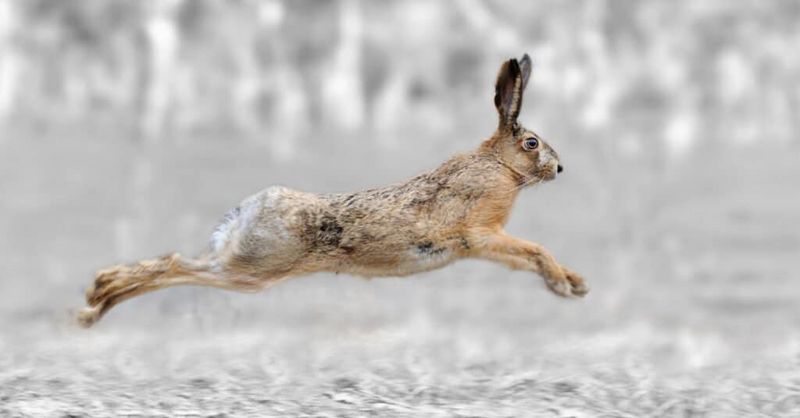
Jackrabbits are not true rabbits but hares, known for their incredible speed and agility. They can reach speeds of up to 45 miles per hour, aided by their long, powerful hind legs. Native to North American deserts and grasslands, jackrabbits use their speed to evade predators. Their large ears help regulate body temperature and provide acute hearing. These agile creatures can change direction quickly, making them difficult for predators to catch. Jackrabbits are a testament to survival in harsh environments, showcasing the attributes required for life in fast-paced, open terrains.
Greyhound

The greyhound is synonymous with speed in the canine world, reaching up to 43 miles per hour. Bred for hunting and racing, these dogs have a streamlined, aerodynamic build and a flexible spine, allowing for a double-suspension gallop. Greyhounds are gentle, affectionate pets despite their racing prowess. Their speed isn’t just for show; it’s a result of centuries of selective breeding. Known for their quiet and calm demeanor, greyhounds are as comfortable lounging as they are sprinting. This duality makes them beloved companions and impressive athletes in the dog world.
Springbok
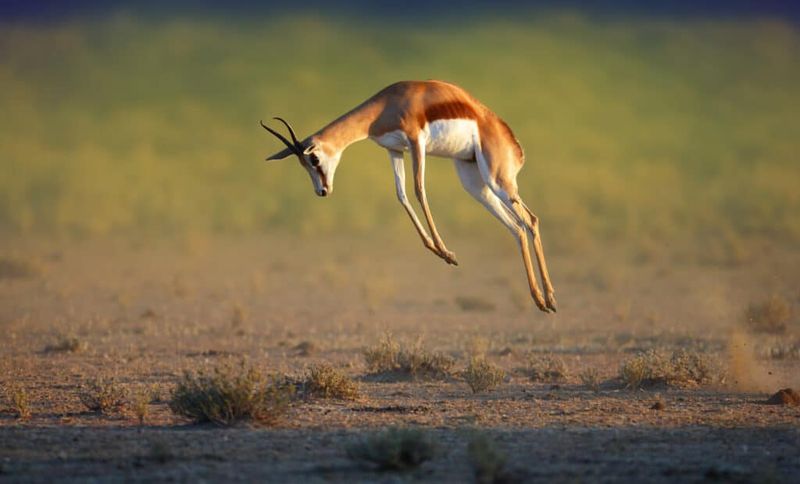
Springboks are renowned for their speed and agility, capable of reaching 60 miles per hour. These antelopes perform spectacular leaps known as ‘pronking,’ displaying their strength and vitality. Native to southern Africa, springboks use their speed to evade predators. Their long, slender legs and light bodies contribute to their swift movements, making them one of the fastest animals across open plains. Their remarkable leaping and sprinting abilities provide an awe-inspiring spectacle of nature’s athleticism. Springboks embody the spirit of the wild, showcasing how evolution crafts creatures for survival and elegance.

